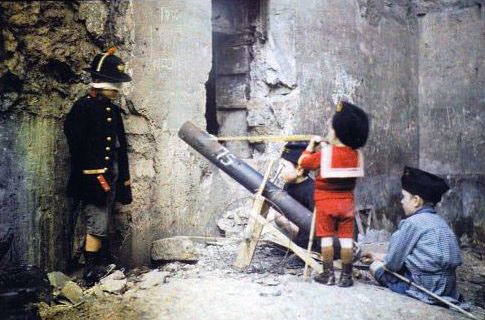The Grenata army: amazing color photos from 1915
posted Thursday, February 20, 2014 at 6:44 PM EDT
In 1915, as World War I was raging, photographer Léon Gimpel befriended a group of street kids in the Rue de Grenata neighborhood of Paris. The kids had their own 'army' and were at play re-enacting the war's battles. Knowing a good thing when he saw it, Gimpel began to visit the kids regularly on Sundays and helped them construct their arsenal from castoff materials. He probably also helped orchestrate the children as he photographed their valiant struggle against the evil Germans.
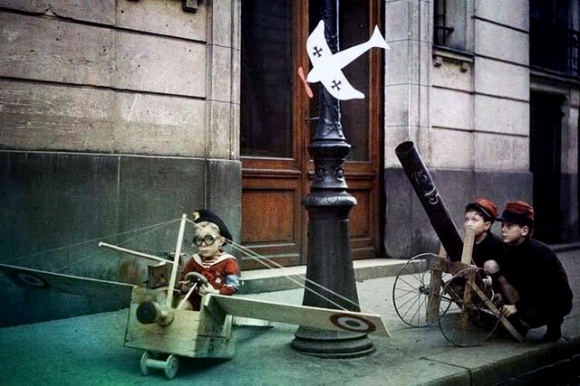
Léon Gimpel was born in 1873 to a Jewish Alsacian family who fled to Paris after Germany took over Alsace. He is perhaps best known for his early use of the revolutionary Autochrome Lumière color process. In 1904, Gimpel met Auguste and Louis Lumière who had just displayed their invention to the Académie des Sciences. At first limited to long exposures, Gimpel applied the autochrome process to still life and landscape photography. With the help of a colleague, Fernand Monpillard, he modified the plates to produce "instant" color pictures. Thanks to this Gimpel was the only photographer to take color images of everyday life during la Belle Époque and on June 10, 1907 became the first photographer to have images published in color.
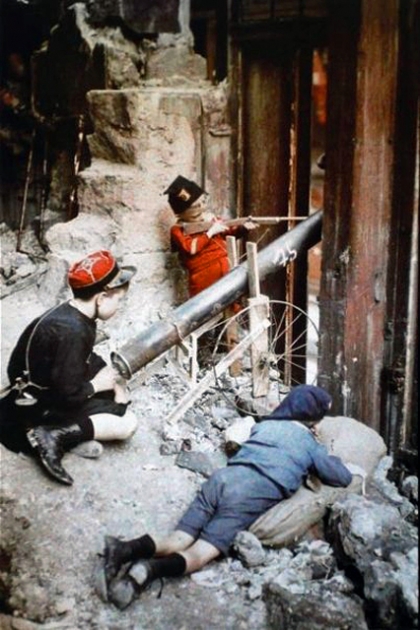
During the First World War Gimpel photographed in and around Paris. On one of his walks through the city he encountered this group of children playing soldiers. He was delighted by them and soon came to know them all. The oldest boy in this remarkable band of brothers was the "chief," while the girls in the group leant their support to the cause playing the "nurses."
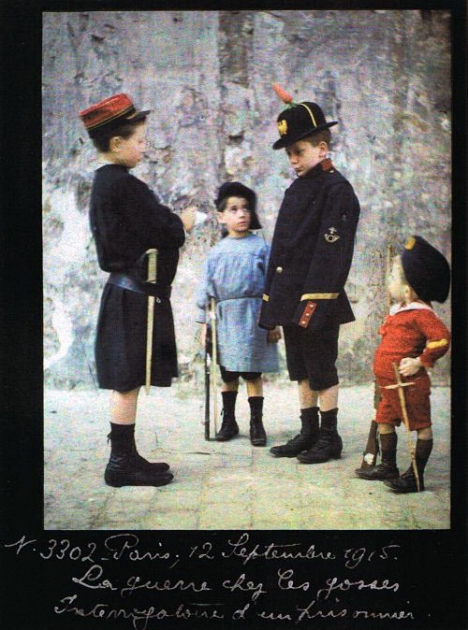
One of Gimpel’s favorites was Pépète, whom he described as "small, slightly misshaped, rather scrofulous, looking like gnome." In spite of this, it was Pépète who each Sunday stepped into the cockpit of his biplane to play the role of the courageous French flying ace.
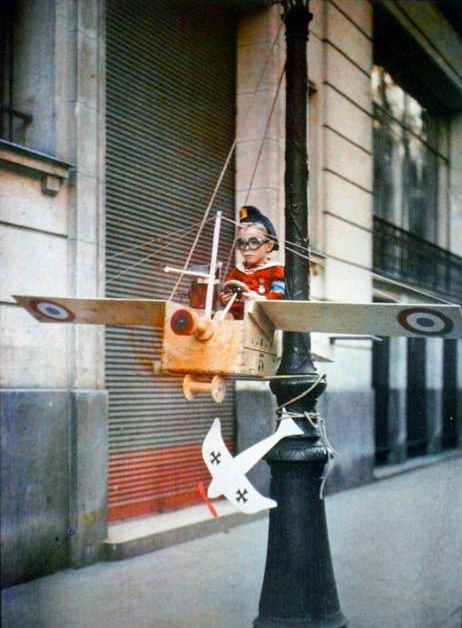
But playing soldier requires an enemy and the chief’s best friend was recruited to play the malevolent German. A paper double eagle adorned the Hun’s cap and a carrot comically replaced the feathered plume of the German helmets. At the end of each day’s battles the German was executed and the carrot eaten by the victorious French forces.
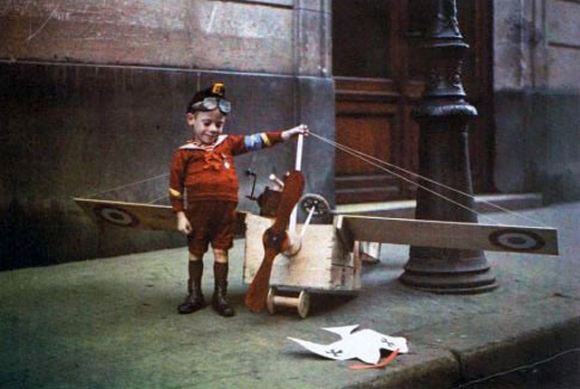
In the photograph of the execution of the blindfolded German, the Chief had first thought of having a firing squad, but thought that that was insufficient. "To execute a Boche," he said, "nothing but a cannon will do."
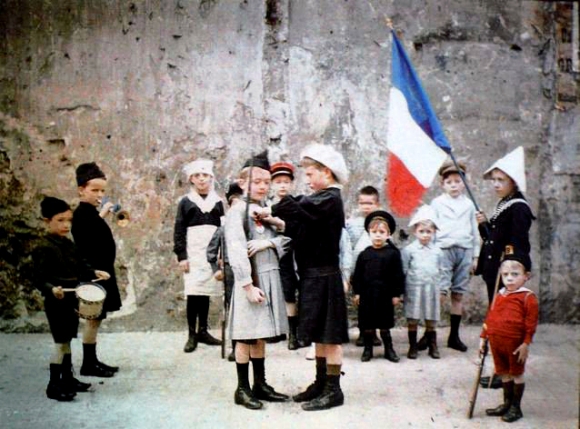
At the end of each day, "war” photographer Gimpel would reward his rag-tag army for their successes on the field of battle with barley sugar. The troops loved it, happily crying out in unison "Vive le Photograph."
Long live the photographer!
(Via retronaut, source Australian War Memorial)
